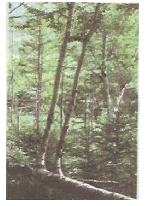Advertisements
Advertisements
प्रश्न
The instrument which can be used to demonstrate geotropism is ______.
विकल्प
Manometer
Thermostat
Clinostat
Barometer
उत्तर
The instrument which can be used to demonstrate geotropism is clinostat.
Explanation:
In the laboratory, geotropism can be demonstrated through the use of a Clinostat. It comprises two configurations that boast planted containers. One remains steady, while the other undergoes rotation.
संबंधित प्रश्न
What is a plant hormone? Name four plant hormones. State one function of each.
Name the two types of tendrils.
Name the plant part which bends towards light but away from the force of gravity.
What is meant by ‘positive geotropism’ and ‘negative geotropism’? Give one example of each type. Draw a labelled diagram to illustrate your answer, indicating the plant part, which shows positive geotropism, and the plant part, which shows negative geotropism.

A big tree falls in a forest but its roots are still in contact with the soil.
The branches of this fallen tree grow straight up (vertically). This happens in response to ______.
P and Q are two types of plants having weak stems which cannot stand upright on their own. The plants P and Q have organs R and S respectively which can grow towards any support which they happen to touch and wind around that support. It is observed that organ R originates from the leaves of the plant whereas organ S originates directly from the stem of the plant.
(a) What is (i) R, and (ii) S?
(b) What is the name of growth movement exhibited by the organs R and S?
(c) Name the stimulus involved in this case.
(d) State whether the behaviour of organs R and S is a tropic movement or a nastic movement.
(e) Name one plant like P and another plant like Q.
The venus flytrap plants are examples of ______.
Analogy:
Towards a stimulus: ______:: Away from the stimulus: Negative tropism.
While conducting experiments to study the effects of various stimuli on the plants, it was observed that the roots of plant X grow and bend towards two stimuli A and B but bend away from a third stimulus C. The stem of the plant X however bends ” away from stimulus A and B but bends towards the stimulus C. The stimulus B is known to act on the roots due to factors related to Earth. Keeping these points in mind, answer the following questions:
- What could be stimulus A?
- Name the stimulus seen in B.
- What could be stimulus-C?
Some plants like pea plants have tendrils which help them to climb up other plants. Explain how is it done. Name the plant hormone responsible for this movement.
